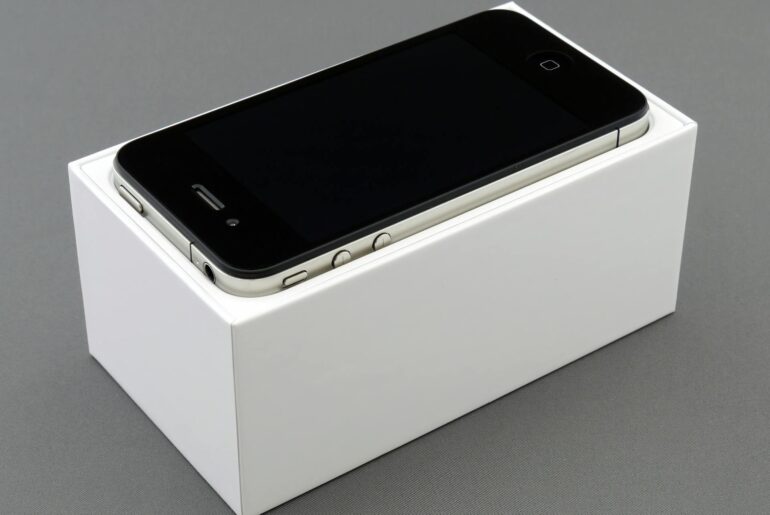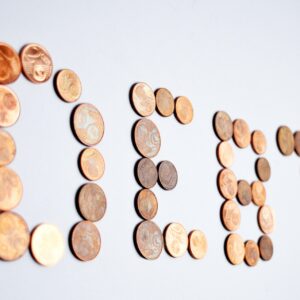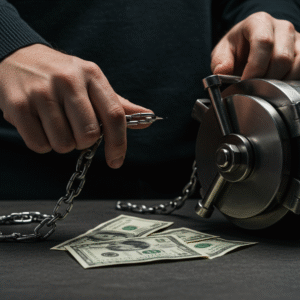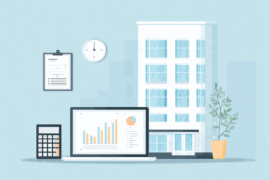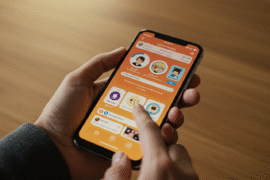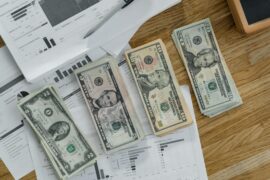This article may contain references to products or services from one or more of our advertisers or partners. We may receive compensation when you click on links to those products or services. Nonetheless, our opinions are our own.
The information presented in this article is accurate to the best of our knowledge at the time of publication. However, information is subject to change, and no guarantees are made about the continued accuracy or completeness of this content after its publication date.
Have you ever kept a gadget you liked even though it wasn’t useful anymore? Apple has recently called two of its most popular iPhone models “vintage.” You might want to know this if you have an iPhone. This name is more than just a cool name; it changes how long your device will last, how much help you can get, and how much it will be worth. We will talk about what it means for Apple to call a phone “vintage,” how they decide which phones to call “vintage,” and how this label can change the way you use your iPhone. If you own one of these models or want to know what the future holds for your trusty device, keep reading to learn more about how Apple classifies vintage products.
- How Apple’s Vintage Classification Affects Your iPhone
- Main Impacts of Owning a Vintage iPhone
- Which iPhone Models Are Now Considered Vintage?
- How Vintage Status Changes Your iPhone’s Value and Support
- Vintage vs. New iPhones
- Deciding What to Do With Your Vintage iPhone
- How to Keep Your Vintage iPhone Working Longer
- Affordable Models to Consider
- How to Get the Most Value From Your Vintage iPhone
- Final Thoughts
- Frequently Asked Questions
- Recommended Reads
How Apple’s Vintage Classification Affects Your iPhone
When Apple calls a product “vintage,” it means that the company no longer makes it and support for it has gone down. This means a lot of things for you. First, you should know that Apple may still fix these devices’ hardware, but their software updates and support for iOS may not be as good. Also, keep in mind that as these devices get older, it’s harder to find replacement parts, which could make them harder to fix and less useful overall.
Main Impacts of Owning a Vintage iPhone
Here are a few implications to consider if you own one of the recently classified vintage iPhones:
- Limited Software Updates: Expect fewer updates and potential security vulnerabilities as older operating systems are phased out.
- Repair Challenges: While you may still get repairs, those parts may be harder to find, and you could face longer wait times.
- Resale Value: Vintage status can affect your iPhone’s resale value, possibly making it more of a collector’s item than a functional device.
Which iPhone Models Are Now Considered Vintage?
To gauge how this vintage classification might impact your specific model, take a look at the table below for important details:
| iPhone Model | Release Year | Vintage Status Date |
|---|---|---|
| iPhone 6 | 2014 | 2023 |
| iPhone 6 Plus | 2014 | 2023 |
Keeping up with your device’s classification will help you manage your expectations and plan for future upgrades or repairs. Always think about how long your technology will last and how it fits into your daily life.
How Vintage Status Changes Your iPhone’s Value and Support
When Apple calls an iPhone “vintage,” it means that the value of the phone and the ways you can get help with it have changed. Apple will usually keep providing service and parts for your iPhone for a limited time, but as the years go by, they will become harder to find. This designation can have a direct effect on how much your device is worth when you sell it. Even though vintage devices don’t sell for as much as newer ones, they are still popular with collectors and fans.
Voted "Best Overall Budgeting App" by Forbes and WSJ
Monarch Money helps you budget, track spending, set goals, and plan your financial future—all in one app.
Get 50% OFF your first year with code MONARCHVIP
Vintage vs. New iPhones
Your support options will also undergo some changes. Consider the following:
- Service Limitations: While Apple might offer some level of service, repairs for vintage devices can become harder to come by.
- Parts Availability: As time goes on, sourcing replacement parts may become increasingly challenging, which could hinder any future repairs you need.
- Software Updates: Although vintage devices might still receive some app support, you shouldn’t expect the latest iOS features or security updates, which could impact your device’s performance and functionality.
| Factor | Vintage iPhone | Current Models |
|---|---|---|
| Resale Value | Lower, but collectible | Higher, due to demand |
| Parts Availability | Limited | Readily available |
| Software Support | Basic app support | Frequent updates |
Knowing these implications helps you manage your expectations regarding support and equips you to make informed decisions about your device’s future. Whether you’re considering an upgrade or simply want to keep it running smoothly, being aware of what “vintage” entails is important.
Deciding What to Do With Your Vintage iPhone
As you reflect on whether to hold onto your vintage iPhone or make the leap to something newer, consider a few important factors that could affect your daily life and overall satisfaction. With technology advancing rapidly, the limitations of older devices can start to become more noticeable. Ask yourself these questions:
- Performance: Is your phone lagging when you perform simple tasks, such as sending messages or browsing the web?
- Software Compatibility: Are you unable to download certain apps or updates due to your device being classified as vintage?
- Battery Life: How often do you find yourself charging your iPhone throughout the day?
- Repair Availability: Are you having difficulty finding parts or services to fix your device?
These considerations not only impact your day-to-day experiences but can also influence your overall productivity and connectivity. If you’re currently struggling with any of these aspects, it might be time to explore newer options that offer enhanced performance and longevity.
How to Keep Your Vintage iPhone Working Longer
If you own a vintage iPhone, it’s important to treat it with care to ensure it lasts as long as possible. Here are some practical tips to help you maintain its longevity:
- Keep It Clean: Regularly clean your iPhone with a soft, lint-free cloth. Avoid using chemical cleaners, as they can damage the surface.
- Battery Care: Charge your phone regularly, but avoid letting the battery completely drain. Aim to keep your battery level between 20% and 80% for optimal health.
- Store Wisely: When not in use, keep your iPhone in a cool, dry place. Avoid extreme temperatures, which can impact both the battery and the internal components.
- Use a Case: Invest in a high-quality case to protect against drops and scratches. A protective case can make a meaningful difference in the longevity of your device.
To help you track the care of your vintage iPhone, consider maintaining a simple table to log maintenance activities:
| Date | Activity | Notes |
|---|---|---|
| Cleaning | Use a soft cloth; no chemicals. | |
| Battery Check | Battery health is at 85%. |
By following these simple guidelines, you not only prolong the life of your vintage iPhone but also preserve its unique charm. Keeping your device functional and visually appealing requires some attention.
Affordable Models to Consider
If you’re eyeing a new smartphone and hesitant about whether to go with the latest iPhone model, consider some solid alternatives that offer great value and performance without the premium price tag. The older iPhone models can still pack quite a punch and might serve you just as well, especially if you don’t need all the bells and whistles. Here’s a speedy roundup of options you might find appealing:
- iPhone 12: A fantastic middle-ground option, it offers 5G capability, an A14 Bionic chip, and an excellent dual-camera system at a more affordable price point.
- iPhone 13: With improved battery life and camera features, the iPhone 13 still feels fresh and functional, backed by powerful performance without breaking the bank.
- iPhone SE (2022): If you prefer a compact phone, the iPhone SE packs the same A15 chip found in the iPhone 13 but in a classic design that feels familiar and easy to handle.
In essence, not every consumer needs to chase after the latest models to enjoy quality features and performance. Exploring these earlier editions not only aligns with your budget but can also bring considerable savings, making it a wise decision in today’s economy.
How to Get the Most Value From Your Vintage iPhone
You may find yourself contemplating the best way to leverage your device for a return on your investment. Selling or trading in your vintage iPhone can yield some surprising benefits if you approach it strategically. First, consider the condition of your device: a well-maintained iPhone can fetch a higher price. Here are a few tips to maximize your return:
- Clean your device: Make sure it’s in good condition, both the screen and casing.
- Research market trends: Check popular resale platforms to know current selling prices for similar models.
- Detail its specifics: Highlight storage capacity and any unique features or accessories that could add value.
If you want to upgrade, trading in your old iPhone might be a good idea. You can get credit toward your next purchase at many stores and even at Apple itself by trading in your old device. Check the actual resale prices against the trade-in values you’re thinking about, because sometimes you can get more by selling directly. Below is a simple comparison of potential outcomes:
| Option | Potential Return | Effort Required |
|---|---|---|
| Sell | Higher market value | More time and effort |
| Trade-In | Immediate credit | Less hassle |
In the end, doing some research and paying attention to the details will help you get the most out of your investment, whether you sell or trade in your old iPhone. Choose something that fits with your money goals and enjoy the rewards of making smart choices.
Final Thoughts
If you know how Apple sorts old devices, you can make better decisions about your current device and any upgrades you might want to make in the future. As technology gets better, knowing the pros and cons of owning an old iPhone gives you the power to make a decision. You can keep your current phone, look into upgrade options, or sell it or trade it in for the most money. If you know these things, you can stay connected and safe and make the best money decisions as a smart tech user. If you have an old iPhone, think about how well it meets your needs right now. Check how well it works, how well it works with apps, and how reliable it is overall. If you think it’s not good enough, you might want to plan to upgrade so you can get updates and help in the future.
Frequently Asked Questions
What does it mean when an iPhone is classified as ‘vintage’ by Apple?
When Apple classifies an iPhone as ‘vintage,’ it indicates that the device has not been sold for more than five years but less than seven years. This designation means that while Apple may still provide some support and service for these devices, parts may be limited.
Which two iPhones have recently been classified as vintage?
The two iPhones that have recently received the vintage classification are the iPhone 6 and the iPhone 6 Plus. These models were originally launched in 2014 and have now crossed the six-year threshold since their discontinuation.
How does being labeled ‘vintage’ affect users of these iPhones?
For users of the iPhone 6 and 6 Plus, being labeled as ‘vintage’ means they may face challenges in obtaining repairs or replacement parts from Apple. While some repairs could still be available through authorized service providers, Apple’s support for these models may become increasingly limited over time.
Will Apple continue to support vintage iPhones?
Apple typically continues to offer support for vintage devices for a limited time, but as these devices age, users should be aware that official repairs and software updates may become less reliable. Users are encouraged to transition to newer models for better longevity and support.
What should I consider if I own a vintage iPhone?
If you own a vintage iPhone, consider how well it meets your current needs. Evaluate its performance, compatibility with apps, and overall reliability. If you find it lacking, you might want to plan for an upgrade to ensure you can access ongoing updates and support.

Reviewed and edited by Albert Fang.
See a typo or want to suggest an edit/revision to the content? Use the contact us form to provide feedback.
At FangWallet, we value editorial integrity and open collaboration in curating quality content for readers to enjoy. Much appreciated for the assist.
Did you like our article and find it insightful? We encourage sharing the article link with family and friends to benefit as well - better yet, sharing on social media. Thank you for the support! 🍉
Article Title: Apple Adds Two iPhones to Its Vintage List and Here’s Why It Matters
https://fangwallet.com/2025/08/07/apple-adds-two-iphones-to-its-vintage-list-and-heres-why-it-matters/The FangWallet Promise
FangWallet is an editorially independent resource - founded on breaking down challenging financial concepts for anyone to understand since 2014. While we adhere to editorial integrity, note that this post may contain references to products from our partners.
The FangWallet promise is always to have your best interest in mind and be transparent and honest about the financial picture.
Become an Insider

Subscribe to get a free daily budget planner printable to help get your money on track!
Make passive money the right way. No spam.
Editorial Disclaimer: The editorial content on this page is not provided by any of the companies mentioned. The opinions expressed here are the author's alone.
The content of this website is for informational purposes only and does not represent investment advice, or an offer or solicitation to buy or sell any security, investment, or product. Investors are encouraged to do their own due diligence, and, if necessary, consult professional advising before making any investment decisions. Investing involves a high degree of risk, and financial losses may occur including the potential loss of principal.
Source Citation References:
+ Inspo
Goodwin, C., & Woolley, S. (2024). Barriers to device longevity and reuse: A vintage device empirical study. Journal of Systems and Software, 211, 111991.
